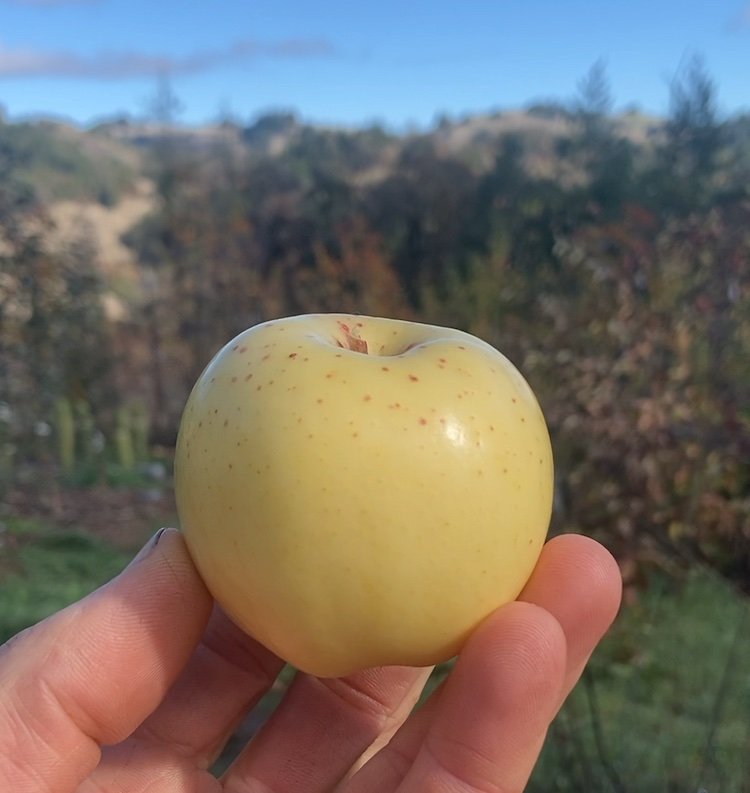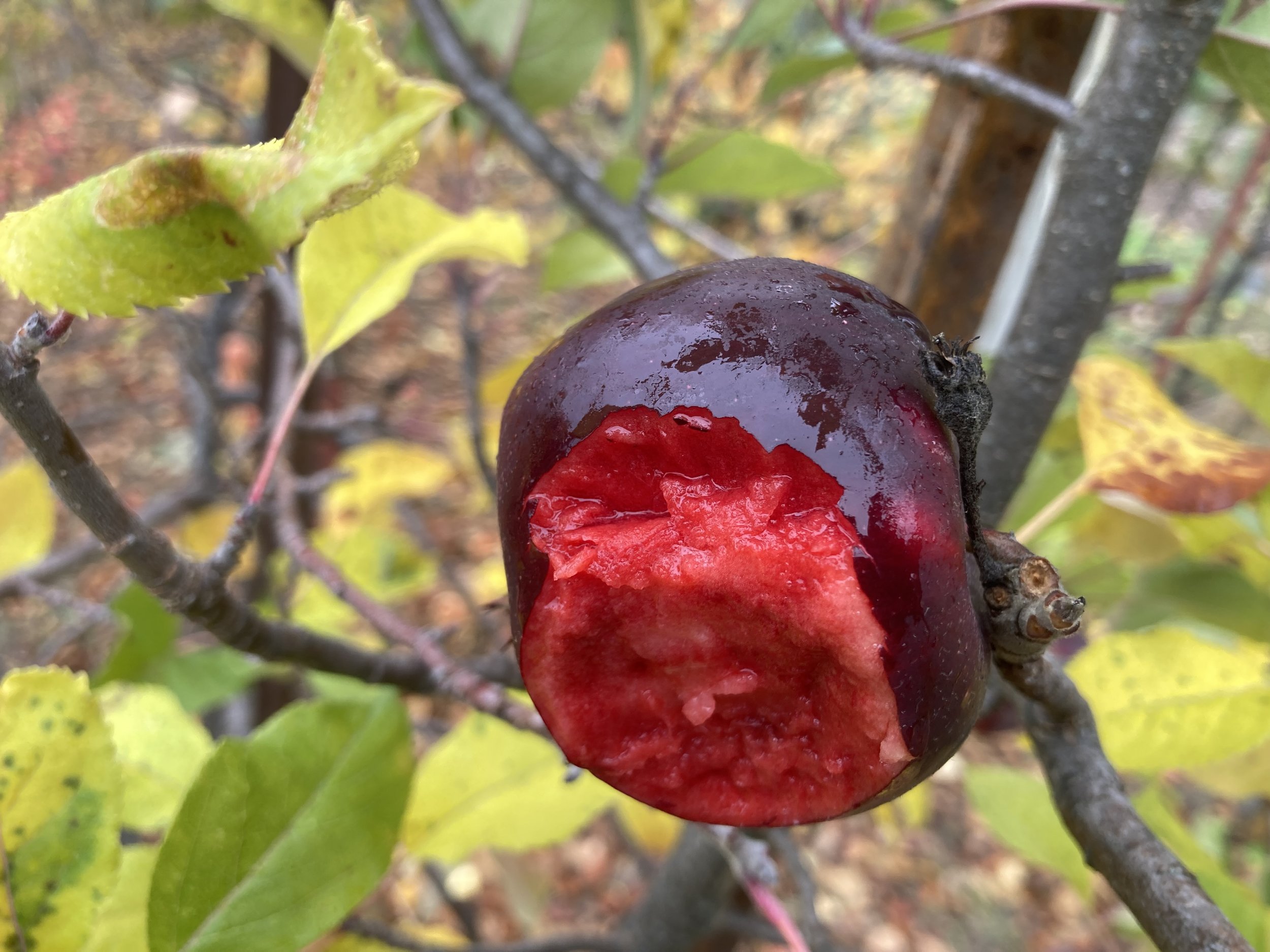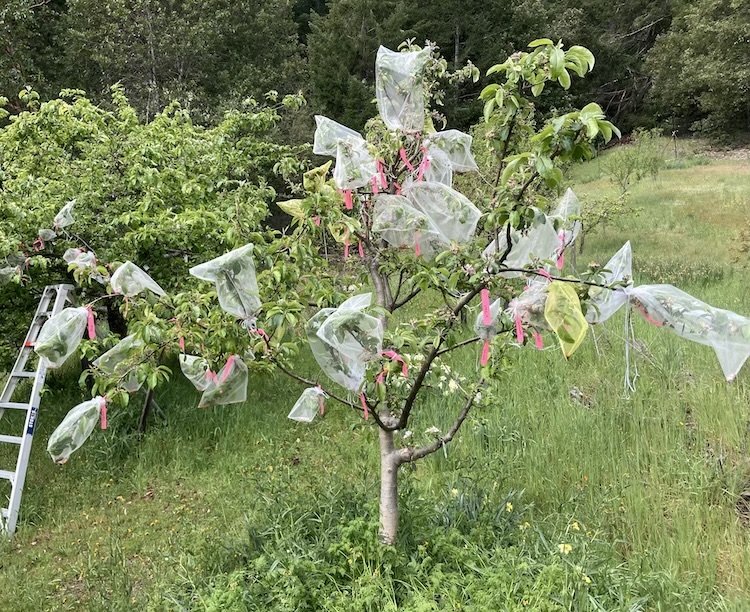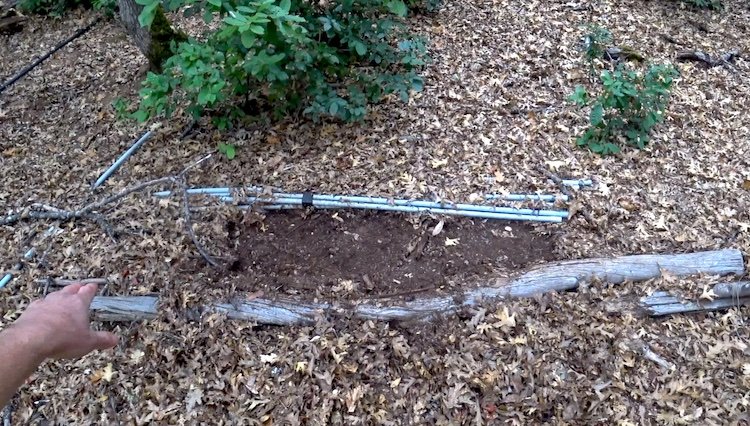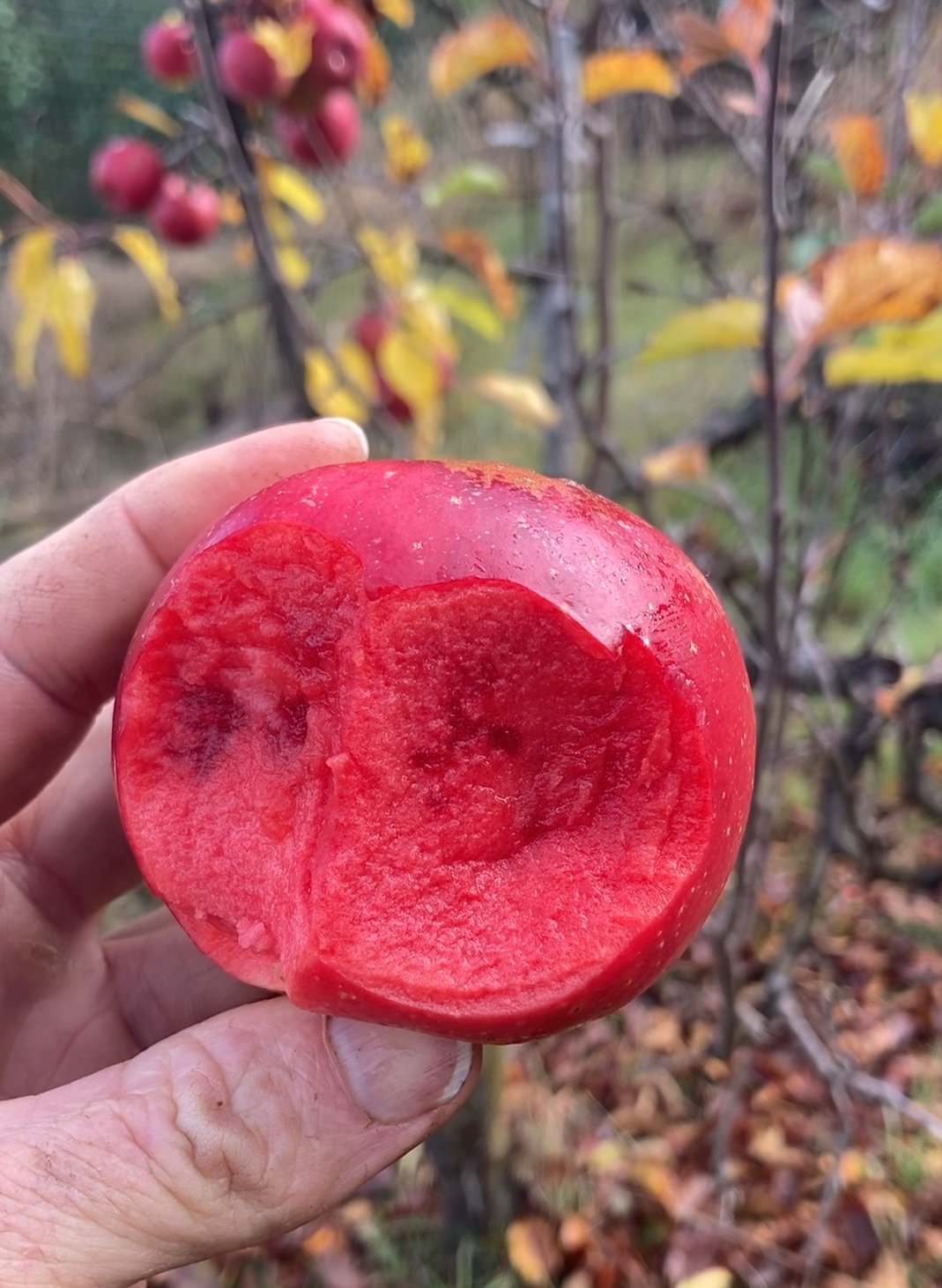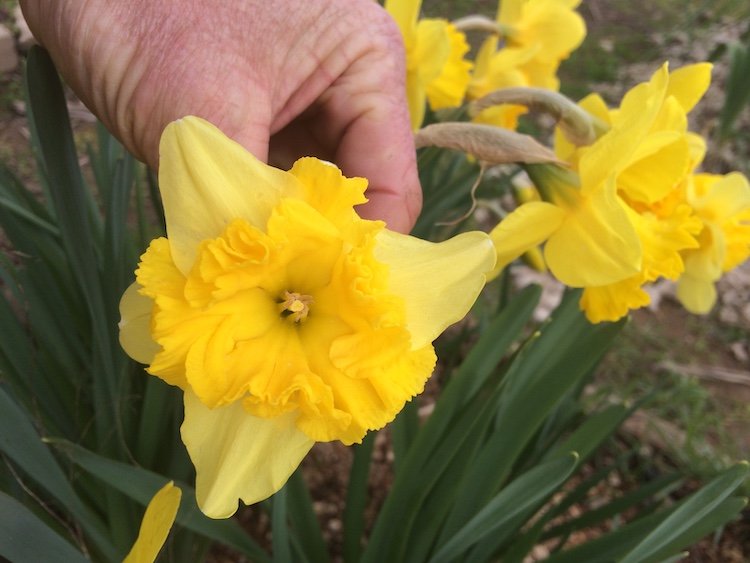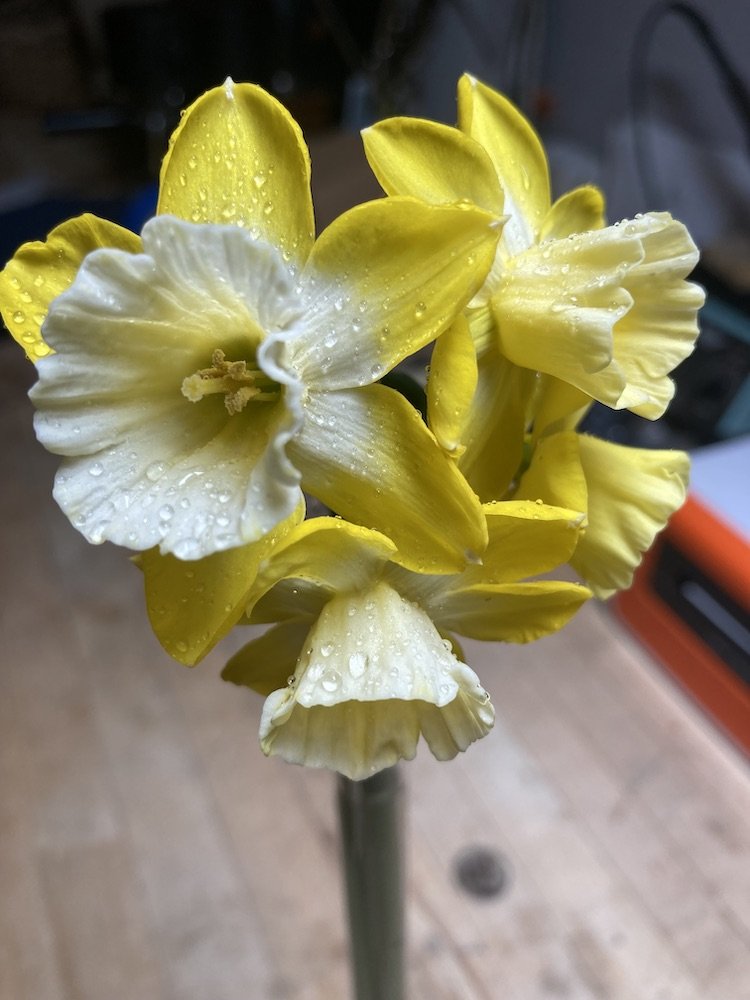First a note on content. I’m an obsessive person. I have every intention of writing content that does not have to do with apples and orcharding again in the future. But I write about what I’m doing and thinking about, and right now it’s apples and orchard stuff. I hope to eventually be doing more on homesteading, tools, axemanship, primitive skills, materials and their properties, practical philosophy, plants and more. I know not everyone is on this blog to hear about this stuff, but the people who are, are very enthusiastic and appreciative of it.
These are the apple crosses I'm growing out this year, with some brief notes on why. This is by far the most exciting year of crosses yet, with quite a few of them using my own apples or even two of my apples crossed together. Also, as more stuff fruits I get at least a little bit of an idea of what parents might be more likely to throw good offspring, like William's Pride.
I originally saved 725 seeds this year, which is just not doable right now. By going through several times I got it down to about 350. Still, that is a lot of seeds. It is a big risk to plant them at all, since I may not have a place to move them to for a while. If need be though, they can just stay in the ground for years and be grafted out any time down the road. The seedlings that were from seed pollinated in 2021 are cut in the fridge waiting for some bud 10 rootstock to show up in the mail. Those are going into a nursery row with grafted trees of the best of my seedlings that have fruited so far, so that I have copies to take with me that are already close to flowering and fruiting. Those trees will not likely hold well in the ground past 2 or 3 years. So, that is my timeline to try to buy and establish a new place. Priority though is to get a good place, not just any place, so if there are some casualties, so be it.
New Red Fleshed King David x Rubaiyat cross, open pollinated. ( I almost never plant open pollinated seed, but I don't want to wait to use this in breeding. It's that good.)
Amberwine x Wickson (sort of a backcross, since Amberwine's parent Vixen is from the etter savory line. Given the great similarity between vixen and wickson, they may even be seedlings of the same cross. Or equally plausible, one is an offspring of the other. Anyway, reinforcement of the savory flavor trait is the goal, but with the excellent attributes brought into the mix by Williams' Pride)
Appleoosa x Pink Lady (An attempt to mesh late hanging genes from Appleoosa's parent Lady Williams, with LW's other descendant Pink Lady. Also Pink Lady is a higher quality apple in general. AND both have a lot of flavor. I should probably make this cross more. It is probably better made in the opposite direcions PL x App')
Appleoosa x Viking (two very high flavor apples, one Red Flesh. I think Viking has a hint of pink in the flesh, but I can't remember for sure)
Black Winesap x Appleoosa (testing the idea that there may be a synergy between RF and the very dark red skinned. "black" apples)
Black Winesap x Black Strawberry (I've only fruited Black Winesap once and it was no good here. But I'm just too curious what two "black" apples crossed together end up making)
Centennial x Wickson (seems like a no brainer. two of the best dessert crabs)
Cherry Crush x Black Strawberry (Dunno, just seems inevitable)
Cherry Crush x Pink Parfait (Seems like a no brainer)
Cherry Crush x Sweet 16 (Two cherry flavored apples, SWT 16 is disease resistant and higher quality over all)
Chestnut x Golden Russet (I would call chestnut a russet leaning apple. It is hard to imagine these two apples coming together and not making some delicious little, richly flavored nuggets of goodness. Seriously, someday ya'll will be like "steven prophesized the amazingness of this apple cross yo's")
Chestnut x Wickson (As much as I've always thought this was an amazing cross to make, I somehow never ended up with many of them, if any. Hoping these 10 seeds make it.)
Flaxen Self Pollinated (I bagged some apple blossoms to see if any would self pollinate. Flaxen was the only one out of half a dozen or more that produced fruit and seeds. I wanted to grow them just to see if they will grow and keep growing or eventually fruit and what the fruit would be like.)
Golden Russet x Ashmead's Kernel (two the most highly respected quality russets. Golden Russet is the best of the best Ashmeads very good+ and much better grower than GR. I just think the best russets should be crossed together, period.)
Golden Russet x Wickson (Instinct or intuition or something, tells me that savory russets are going to be amazing. I suspect this is the better direction to make this cross, but I made it in both directions)
January Russet x Golden Russet (Chasing a high quality, super late russet! This is the very top cross I would think to make for that purpose. It is possible that January Russet has GR as a pollen parent already. That could be a good thing.)
Musky/watermelon flavored Rub x PP cross x Hard Candy Cider (Again, trying to synergize high flavor genes. Also, three RF apples in this crosses heritage, but neither parent expresses RF)
Pink Lady x Appleoosa (This is a good cross. Trying to get red flesh in a late hanging, high quality apple. Plus, there very well may be a synergy between the complex flavor of both)
Pink Parfait x Appleoosa (trying to carry Appleoosa's excellent qualities forward into a higher overall quality apple, and hopefully late as well. PP lacks in the intense red flesh and berry flavors, but the genes to synergize with appleoosas RF traits are likely there)
Pink Parfait x Black Strawberry (Trying to take some of the best of BS and leave the less desirable traits behind by crossing it into the excellent PP)
Pink Parfait x Lady Williams (Two of my latest apples. PP is better overall, but LW brings plenty to the table with high flavor potential, and it is later)
Pink Parfait x Musky/watermelon Rub x PP cross. (Back cross to Pink Parfait, hoping to bring in some unique traits. It's a gamble since that one parent has not been assesed thoroughly, but i just have a feeling it's going to work out)
Pink Parfait x Pink Lady (Same reasons as PP x LW above, but probably a better cross)
Pink Parfait x Pinker lady. (I've only tasted strawberry flavor in 3 apples, PP, Pinker Lady and Black Strawberry. By far, PP is the weakest, but it is still there. also, two high quality apples with pink flesh, and while Pinker Lady is not late like PP, it's parent Pink Lady is)
Pink Parfait x Whitwick (Attempt to bring more flavor genes into PP, plus Whitwick is somewhat late, so offspring are likely be be late November and later)
Pink Parfait x Williams' Pride (this has to be good, in both directions)
Pink Parfait x Cherry Cox (chasing cherry flavor in a pink fleshed apple)
Pink Parfait x Wickson (Why not. I mean, my motto is pretty much cross wickson with everything)
Pinker Lady x Appleoosa (Higher overall quality pink fleshed seedling (Rubaiyat x Pink Lady), with more intensely pink fleshed seedling (Grenadine x Lady Williams) full of intense flavors. Also, there they have the same late hanging genes in their ancestry)
Pinker Lady x Cherry Crush (had to be done)
Pinker Lady x Pink Parfait (No brainer here. Two very good to excellent pink fleshed apples of good size)
Rubaiyat x Cherry Cox (Trying to get cherry flavor in an RF apple. I suspect that cherry flavors lurk somewhere in many of the RF apple genetics. I hope so anyway)
Rubaiyat x Pink Lady (Chasing late hanging, higher quality RF apples with lots of complex flavor)
Rubaiyat x Whitwick Pippin (shooting for synergy between whitwick's high flavor and rubaiyat's berries and fruit punch thing, plus, obviously red flesh)
Sunrise x Cherry Cox (chasing cherry flavor in an improved apple with some good modern traits)
Sunrise x Rubaiyat (High quality modern apple that could use some pizazz and red flesh)
Sunrise x Muscat de Venus (high quality modern apple with umami bomb)
Sunrise x Wickson (trying to bring savory flavor into a high quality, well behaved modern apple)
Vanilla Pink x Pink Parfait (very interesting Pink Fleshed apple with unique flavor traits, crossed with higher quality pink fleshed apple. Another step in carrying forward the best traits of Grenadine into better dessert fruits)
Viking x Whitwick Pippin (Two high flavor apples with complex fruity flavors. It really had to be done)
Whitwick Pippin x Rubaiyat (flavor synergy and RF)
Wickson x Appleoosa (same vein as Wic x BS and Wic X Rub)
Wickson x Black Strawberry (duh)
Wickson x Golden Russet (the less interesting direction to make this cross when chasing a russet apple, but I am growing a few anyway.)
Wickson x Rubaiyat (I originally saved 50 of these, but pared it down to 20. That was painful, but it had to be done. I will no be surpised if 33% or higher of these are worth growing and grafting. We'll see. So far this cross has yielded Cherub and Tomboy)
Williams' Pride x Appleoosa (WP expresses a small amount of RF and throws excellent offspring. Appleoosa has amazing quality, but could use some refining influence from someone like the exemplary WP. Also WP, has disease resistance genes!)
Williams' Pride x Black Strawberry (Again, attempting to elevate BS to a higher quality desert apple, with the near flawless WP)
Williams' Pride x Centennial (two excellent very early apples, with little else in common. I don't know man, I'm pretty sure this is going to work!)
Williams' Pride x Musky/watermelon flavored (Rubaiyat x Pink parfait) seedling (This is a gamble crossing an apple I think is going to be unique and very good to excellent, with one of my best parent apples. Will the musky flavor persist? will it be passed on? oh the suspense!)
Williams' Pride x Pink Parfait (This has to make some great apples)
Williams' Pride x Muscat de Venus (chasing the success of WP x Vixen crosses which produced Amberwine and a couple others that are under further observation. MDV= UMAMI BOMB)
Williams' Pride x Wickson (trying to expand and follow up on the success of Williams Pride x Vixen crosses)
When I first decided I had to move, I thought I might pause this project until I got a new place. Well, that didn't work. I didn't get this far by being sane and cautious :D


